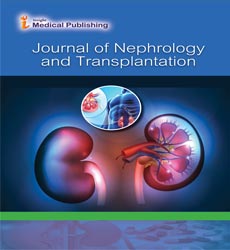NR4A1 down-regulated osteoblast differentiation through TGF-beta Pathway and Elesclomol (STA-4783) rescue the phenotype
Abstract
Regenerative medicine is an emerging new medical discipline that aims at treating chronic, age-related degenerative diseases e.g. diabetes, Parkinson’s disease, osteoporosis, osteoarthritis, using stem cells. A number of stem cells types have been envisaged, as good candidate for therapy and one of the most important type are human Bone Marrow MSCs. Complicated and non-healed fractures represent a major health care problem that not only affecting elderly patients with osteoporosis but also young persons exposed to traumatic injuries due to accidents and in patients with cancers e.g. osteosarcoma or metastatic breast, prostate, thyroid cancers that result in bone destruction. The principle challenge for treating these conditions is to provide a platform enhancing bone regeneration. Regenerative medicine can provide a novel approach for treating these conditions by providing sufficient number of clinical suitable, transplantable bone forming (osteoblastic) cells that can used for therapy. Thus, several approaches have tried to differentiate hBMSCs successfully into osteoblastic cells. Bone formation is a dynamic process that is regulated by many different factors including growth hormones, cytokines, transcription factors, and other molecules. However, human hormone Nuclear receptors (hHNR) are new molecules which has shown to play essential role they are mostly transcription factors with some known and unknown ligands the activators can be steroid hormones, including retinoic acid, Vitamin D, progesterone, and various lipid-soluble signals. In this study we used human Mesenchymal stem cells (hMSCs), that are differentiating highly to bone forming osteoblasts. Human MSCs were differentiated to osteoblasts in the presence of NR4A1 siRNA where after these cells were analyzed by ALP and alizarin red staining and gene-expression. Whole genome microarray was performed on NR4A1 knock down cells and GeneSpring was used for analysis. We used a small molecule called Elesclomol (STA-4783) at the following concentrations (0.01, 0.1, 1 uM) to induce differentiation. We discovered a hHNR called NR4A1 as the highest expressed after human MSC differentiation to osteoblasts by whole genome microarray. Knock out of NR4A1 showed that downregulation of osteoblasts differentiation of hMSCs both in ALPL expression and key marker gene expression. Whole genome microarray analysis further confirmed down-regulation of key pathways when we KD NR4A1. Further studies with small molecule activators, we discovered a novel molecule called Elesclomol (STA-4783), which could activate and enhance osteoblast differentiation. Elesclomol activation of hMSCs also induced the gene expression of NR4A1 and rescue the phonotype of NR4A1 KD. In addition, Elesclomol activated the TGF-ß pathway, by regulating key marker genes. In this study we have discovered the role of human NR4A1 during osteoblast differentiation and that Elesclomol is a positive regulator of NR4A1 through TGF-ß signaling.
Open Access Journals
- Aquaculture & Veterinary Science
- Chemistry & Chemical Sciences
- Clinical Sciences
- Engineering
- General Science
- Genetics & Molecular Biology
- Health Care & Nursing
- Immunology & Microbiology
- Materials Science
- Mathematics & Physics
- Medical Sciences
- Neurology & Psychiatry
- Oncology & Cancer Science
- Pharmaceutical Sciences
